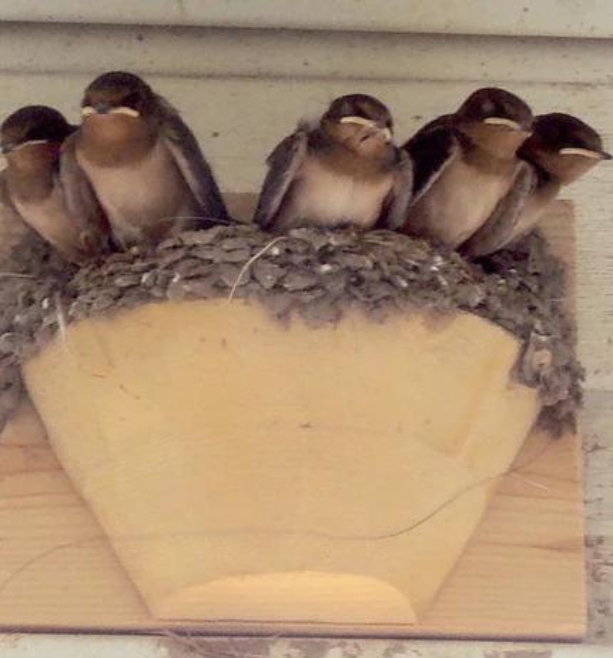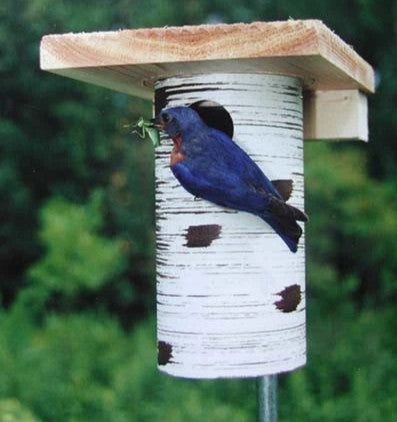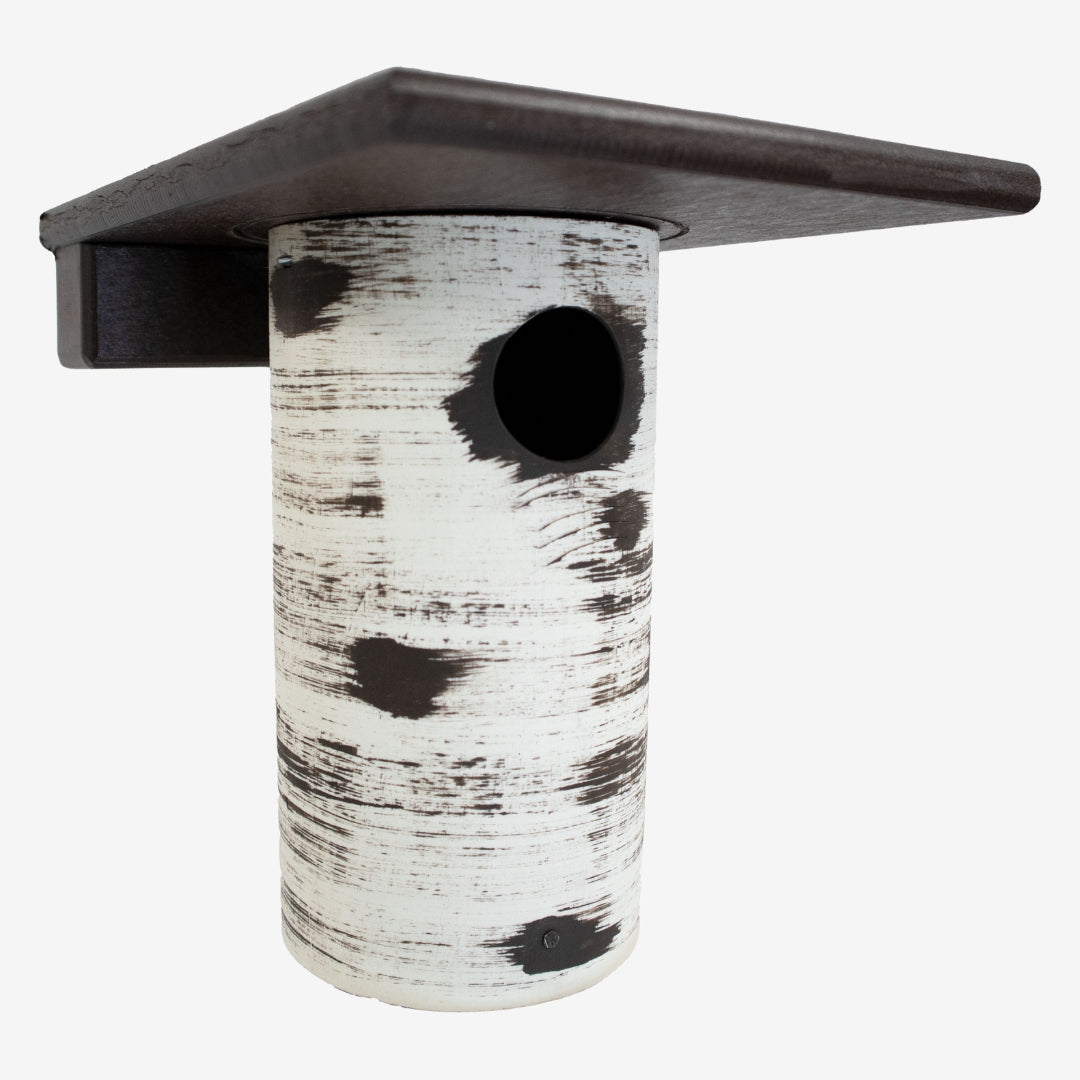 Create A Haven For Birds On Your Property
Create A Haven For Birds On Your Property
Birdhouses are ideal for nesting and even roosting on cold nights, but natural shelter and cover is equally beneficial to your friendly fliers!
After all, what did they do before we started feeding them and putting up birdhouses anyway?
Cavity-nesting birds sought out snags and dead trees (and they still do), of which there are fewer and fewer these days in the age of development.
Robins, jays, cardinals and other birds who don't use houses have always nested in trees, shrubs, bushes and thickets.
It's fairly simple to create a haven for birds on your property in a small amount of space.
A brush pile in just one corner of the yard gives birds the ability to duck and hide from predators and the elements, naturally and effectively.
Brush piles also offer forage, which is definitely an added bonus!
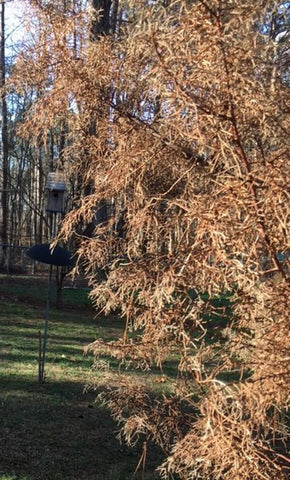 A Base Camp For The Birds
A Base Camp For The Birds
This bluebird house is situated near a once beautiful Colorado Blue Spruce. If ever there were a reason for "planting native"... here's a good one!
When something breaks, it's simply replaced, but when something dies it can be tragic, a big fat bummer.
The unbearable heat last summer, combined with a devastating drought in fall claimed this well established, 20-foot tree. It was a haven for birds seeing so much activity daily, they would fly in and out, to and from various bird feeders.
It was almost like base camp for the birds!
Cutting down this one hurt, and we certainly planted a new evergreen in close proximity. But the dead tree would still go to good use in the back corner of the yard.
Leaving it pretty much intact, it was dragged and plopped down for the birds... and they love it!
Almost immediately, birds were flitting in and out of the newly located tree, even though dead and with brittle needles, it made an awesome shelter.
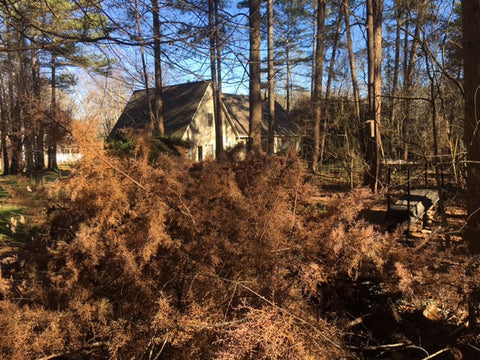 Create An Awesome Shelter For Your Birds... Naturally
Create An Awesome Shelter For Your Birds... Naturally
Keep the birds in mind next time you're forced to remove a dead tree!
Especially with spring upon us and the well known garden itch - save pruned branches, worn mulch and fallen leaves as they're excellent materials for a new brush pile.
Create an awesome shelter for your birds... naturally!


